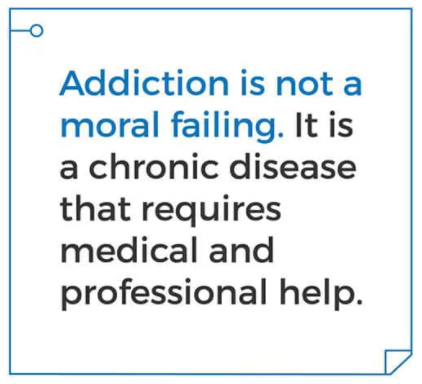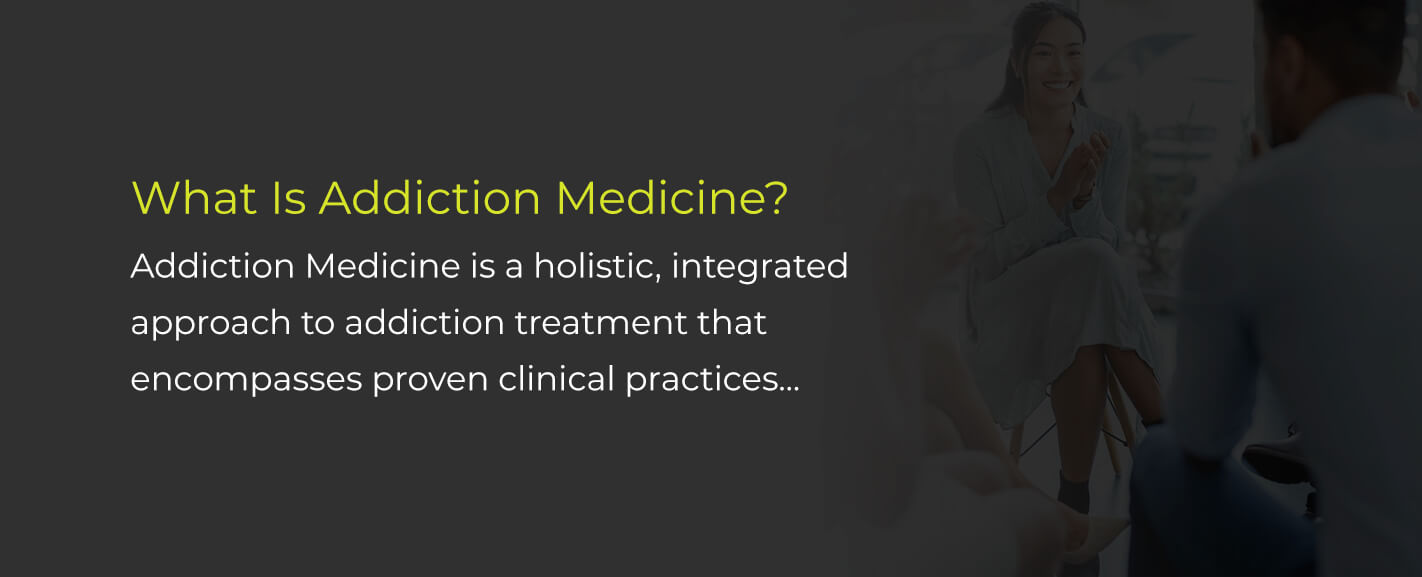
 Addiction is a disease that changes the brain by undermining the way it registers pleasure and influences learning and motivation.
Addiction is a disease that changes the brain by undermining the way it registers pleasure and influences learning and motivation.
Everyone’s path to addiction is different but has one thing in common: continued use of substances over time. Regardless of why someone first uses a substance, even if it is a prescribed drug, the brain starts to change with the initial use and continues to change in both structure and function over time.
Just as cardiovascular disease damages the heart and diabetes impairs the pancreas, addiction hijacks the brain. It is important to recognize that addiction is a disease and not a choice. Just like with any disease, getting the right treatment is vital to recovery. Substance use disorder treatment programs helps patients put active addiction into remission.
Substances like drugs and alcohol can make a significant impact on a person’s overall health. Different substances cause different effects on the body, ranging from noticeable short-term effects to long-term detrimental effects. The longer a person uses a substance, the more likely these effects will remain permanent even after a person stops using.
People use substances in various ways — consuming, inhaling, smoking, etc. — but regardless of the method, these substances impact the brain and alter how it works. A person using drugs or alcohol can begin to have little control over their usage and experience feelings like cravings or other health effects.
Substance use is taking a toll on people in the United States. Learning the numerous health implications that can occur in alcohol and drug use can help people reach out for treatment.
Substance use disorder has many physical health effects that range from short-term issues to long-term health problems. Some physical effects of using drugs or alcohol are instantaneous, while others can emerge slowly from regular use.
Physical health effects of substance use include:
All types of drugs and alcohol affect a person’s brain’s reward circuit after excessive use. This part of the brain controls the release of dopamine and gives people euphoric feelings when using drugs and alcohol. Repeating that process can cause people to develop addictions, and that is the beginning of the adverse effects that substance use has on the brain and health wellbeing of a person.
Signs of mental effects may not present themselves right away. Over time, drugs and alcohol can change the brain’s chemistry and how it handles a person’s decision-making ability. From cravings to memory loss, people can experience numerous mental health effects from addiction, including:
A significant aspect of addiction is its impact on a person’s personal life, including relationships, family, employment and other obligations. A person with substance use disorder may lack the control to avoid using, regardless of the negative consequences in their life. This type of chronic disease can transform a person’s life and the people surrounding them.
Some of the social effects that substance use has on a person’s life include:



Addiction Medicine is a holistic, integrated approach to addiction treatment that encompasses proven clinical practices including psychotherapy, medication, mindfulness-based skill development, 12-Step Facilitation and a full range of evidence-based practices. Based on the understanding that addiction is a disease, Addiction Medicine combines compassionate patient engagement and science to address each patient’s physical, social and emotional needs.
Short-term and long-term substance use can affect your physical and mental health. The quality substance use treatment programs available at Gateway are designed to help our patients stop these effects in their tracks. Through individualized evidence-based addiction therapy services, people can truly begin to heal. Finding the right path to a substance-free lifestyle can be difficult, but Gateway is here to help.
Here at Gateway Foundation, we treat three main categories of substance use — alcohol use disorder, co-occurring and dual diagnosis and drug use disorder. These categories help treat various types of substance use issues and other present conditions to ensure that patients receive the treatment they deserve.
We strive to learn as much about our patients as possible to design treatment plans to align with their lives. At Gateway Foundation, we celebrate diversity and commit to serving every patient regardless of their life situation, beliefs, profession, income or race. Our programs will help treat every aspect of addiction, including a patient’s emotional, physical and social needs.
Alcohol use disorder, or alcohol addiction, is when an individual lacks control over their alcohol consumption. Individuals struggling with alcohol use disorder can experience problems being preoccupied with drinking alcohol. They may continue to consume alcohol even after noticing the negative impacts it makes on their lives. This condition may cause people to drink more to feel the effects of drinking, and they might feel withdrawal symptoms soon after refraining from alcohol.
Numerous factors contribute to alcohol use disorder, like a person’s environment, genetics, mental health and social aspects. While these factors contribute, there is no single cause for alcohol use disorder.
Seeking out treatment for alcohol use disorder is essential to a person’s wellbeing. Alcohol use has many adverse health effects, impairs the brain and alters a person’s life. Noticing the signs of alcohol use disorder can help someone struggling with alcohol addiction reach out for help or inform someone who has a loved one struggling.
The signs of excessive alcohol use include:
If you or a loved one is dealing with alcohol use disorder, searching for treatment programs is the next big step. Alcohol use disorder treatment programs can help get someone back on track with their life and feel a sense of control over themselves and their condition. Alcohol Use treatment from Gateway Foundation offers patients the chance to better their health and wellbeing.
The various alcohol use treatment centers that Gateway has in Illinois offer a skilled and compassionate staff. Our team can help individuals overcome alcohol use disorder with evidence-based and holistic-based treatment services. Our goal is to help you overcome challenges and succeed with your treatment.
Looking to a professional for help with conquering alcohol addiction is the best decision a person can make because your chances for successfully reaching sobriety increase. A relative or a friend can be a great person to talk to about your problems, but the resources and expertise that the staff at our facilities have are bounds greater and more effective in healing.
When you enter an alcohol rehabilitation center, you can expect staff to help motivate you through recovery and guide you through every stage, like detoxification, withdrawal management, inpatient or outpatient treatment, and ongoing therapy. Patients will learn various coping methods for handling stressful alcohol triggers and access other resources to understand alcohol use disorder better.
Deciding to get treatment for alcohol addiction at Gateway Foundation is a huge accomplishment and a step toward recovery. Our treatment programs will help patients gain their health and their life back. Each patient’s recovery process is different, and Gateway Foundation will tailor each patient’s treatment plan for alcohol use disorder to be the most effective route toward sobriety.
Gateway Foundation’s various treatment programs set out to help as many individuals as possible struggling with substance use disorder. People seeking treatment require plans that work best with their current life situation and health history. Providing individuals with co-occurring and dual diagnosis treatment can help those dealing with mental health issues and substance use disorder at the same time.
Co-occurring and dual diagnosis treatment helps treat patients struggling with addiction while handling mental health problems like anxiety, depression, bipolar disorder, schizophrenia and other mental illnesses.
This treatment is different from a patient only experiencing substance use disorder because the substance isn’t the center of attention during the recovery process. Medical professionals must keep all conditions in mind when handling treatment options.
Substance use impacts a person’s overall health, so linking substance use disorder to other mental health problems is common. People facing mental illness may turn to substance use to help deal with their condition. This occurrence can potentially lead to addiction when people regularly self-medicate with drugs or alcohol. Sometimes the connection appears when a person struggling with addiction develops mental health problems through the effects of excessive drinking or drug use. The co-occurring disorders can be a powerful cycle to break, and the right treatment program can be the best option for patients.
Some of the signs symptoms of co-occurring disorders include:
Without co-occurring and dual diagnosis treatment, the recovery process for only substance use can be less effective. Rather than solving both problems for a better chance of recovery, the focus is solely on the addiction. The connected mental health problem is not recognized, allowing it to sit inside and potentially turn to the substance again after treatment.
Untreated mental health conditions may lead to a relapse post-treatment. Substance use disorder is a chronic condition, so relapse is possible without the proper treatment or resources.
Patients can find many benefits in co-occurring and dual diagnosis treatment when they experience substance use disorder and mental illness. Co-occurring and dual diagnosis treatment facilities like Gateway Foundation have the knowledge to treat patients with these conditions.
Our treatment center considers the entire person when crafting recovery plans. Treating all conditions helps detail the ongoing care plan to prevent relapse and help the patient strive for an overall healthy life. Co-occurring and dual diagnosis treatment centers also help patients get answers for their mental health problems and learn why they developed an addiction to drugs or alcohol. This knowledge can help bring mental clarity to the patient and let them think more clearly about their choices and past mistakes.
With the various resources, therapy options, treatment programs and knowledgeable medical staff at Gateway Foundation, people with co-occurring disorders can feel confident in the quality of care they receive.
Dealing with substance use disorder, or drug addiction, is a strenuous condition that impacts a person’s ability to think clearly about their actions surrounding drug use. They’ll lose most of their control over the substance and use it regularly to satisfy cravings. An individual will continue to use the drugs and either ignore or fail to see the negative impact the drugs have on their health and life. The sooner someone seeks treatment for substance use disorder, the better their chances are for a successful recovery process.
Many people associate substance use with illicit drugs like cocaine, methamphetamine or heroin addictions. Illicit drugs are a part of the problem, but there are numerous types of substances that people can become dependent on. Some of these drugs can be prescription medications like opioids and ones easily available at convenience stores like tobacco products or sleep medication. Substance use disorder covers a wide variety of drugs, and it’s helpful to learn how each drug category impacts a person’s wellbeing and how Chicago addiction treatment centers like Gateway Foundation can help patients struggling with any of these substances.
Learn more about the different substance use addictions that we can help treat at Gateway Foundation.
Stimulants are a class of drugs that speeds up communication between the brain and the body. This drug can make people feel more alert and energetic, and the types of substances can range from illicit drugs to common products like caffeine that people use every day.
Using large amounts of stimulants can result in intense symptoms or overstimulation. Some of the dangerous stimulant symptoms include headaches, anxiety, seizures, aggression, panic attacks and paranoia. Using stimulants regularly for an extended time can cause long-term health effects.
People can take stimulants in a variety of ways. Depending on the substance, stimulants can be consumed, snorted, injected or smoked. The effects of each simulant substance vary depending on the type and the method of use.
Drugs that are considered stimulants include:
Stimulants have varying symptoms depending on the level of drug use and the person. The signs and effects of this type of substance can be dangerous and possibly life-threatening.
The symptoms and side effects of using stimulants include:
Depressants are a substance that lessens a person’s feelings of stimulation or motivation. Though the name alludes to the mental illness depression, they do not necessarily make a person depressed. They cause people to feel an intense feeling of relaxation by slowing down the communication between the body and the brain.
Depressants impact a person’s ability to control their coordination and concentration. Depressants can be dangerous when consumed in large quantities, as they slow down vital processes that regulate your body. Some of the effects that depressants can have on users include vomiting, sleepiness, unconsciousness, poor judgment and death.
Regularly using depressants can lead to addiction because of their effects on the brain and other parts of the body. Drugs that are considered depressants include:
Using depressants will cause various symptoms and effects on a person’s body. Considering overall health when using drugs is helpful for wanting to seek out treatment for substance use disorder for depressants.
The symptoms or health effects a person can experience from depressants include:
Depressants can become increasingly dangerous when combined with other depressants or when a person uses the substances alone.
Opioids are substances that derive either from labs or are found naturally. Many types of opioids are prescription drugs and are used for pain management, but other types of opioids are illicit substances and are used recreationally.
Opioids work by blocking the pain receptors in the brain, which prevents the body from knowing about the pain. Prescription opioids are common after serious injuries or surgeries, but these are often used illicitly and the growing issue of opioid use and overdose in the United States shows that these substances are dangerous in addiction.
Seeking out treatment for substance use disorder for opioids is essential to a person’s wellbeing. Any type of opioid is dangerous and can cause severe effects on a person’s health.
Substances that are considered opioids include:
Seeking treatment for opioid use is crucial for protecting yourself or a loved one against adverse physical, mental and social effects.
Cannabinoids describe all of the substances that derive from the cannabis Sativa plant. Cannabis sativa plants have various types of cannabinoids, but the two common ones are THC and CBD.
People use substances that derive from the plant and synthetic substances to replicate the effects of the natural cannabinoids. These substances have addictive properties and side effects that can harm a person with regular use.
The different types of cannabinoids include:
Dissociative substances are psychedelic drugs that alter a person’s sensory abilities and cause them to feel a detachment from their environment. These substances can cause the brain to create auditory or visual distortions and produce other dangerous effects, like memory loss, body tremors, numbness, anxiety and altered motor function.
Dissociatives can be dangerous when taken at any dosage. People must seek treatment for addictions to this type of substance to prevent further negative impacts on their overall health.
Drugs that are considered dissociatives include:
Empathogens contain substances that increase a person’s ability to connect with others and enhance dopamine release. Since the substance causes an intense boost of dopamine and serotonin, it can cause a person to have drastic mood swings when they are sober or going through withdrawal.
Ecstasy is a common empathogen that also exhibits the effects of hallucinogens and stimulants. This substance is also known as MDMA and is a common drug in the party or club drug world. Ecstasy is commonly used in pill form and causes people to stay awake for long periods and feel high amounts of energy. This substance has addictive properties and effects that can negatively impact a person’s health.
People can develop addictions to other types of drugs that will benefit from the treatment programs at Gateway, including:


Gateway Foundation is proud to offer substance use treatment centers throughout Illinois. Find the closest treatment facility if you or a loved one is struggling with addiction.
Don’t let overcoming a disease like addiction overwhelm you. Contact us today and begin building your recovery community.
We use cookies to give you the best experience on our website. If you continue without changing your cookie settings, we assume that you consent to our use of cookies on this device. You can change your cookie settings at any time but if you do, you may lose some functionality on our website. More information can be found in our Privacy Policy.